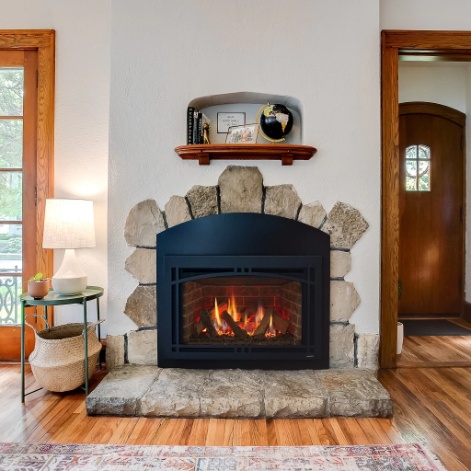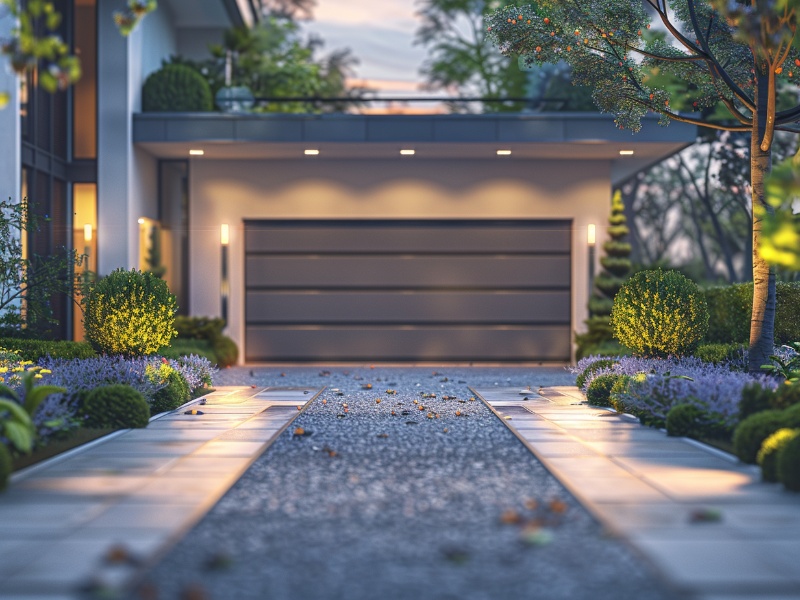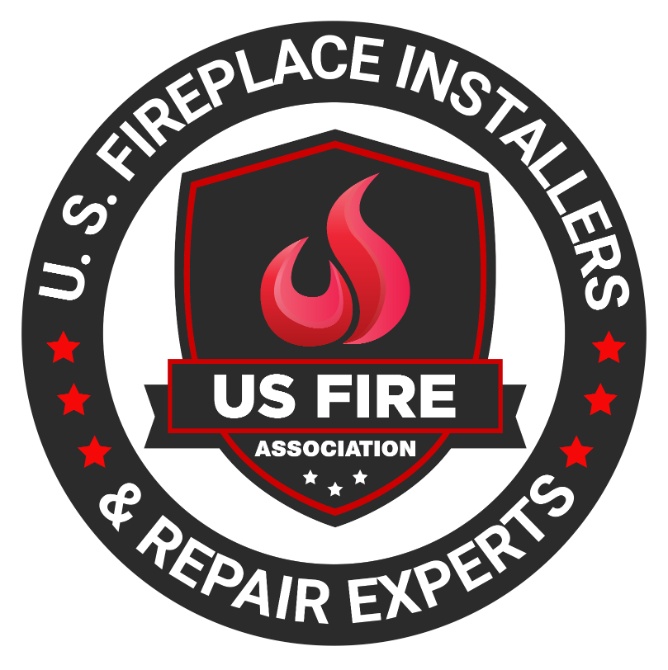Table of Contents
- 1 What Are Standard Size Garage Doors?
- 2 Why Is It Important to Know the Standard Size of Garage Doors?
- 3 What Are the Factors That Determine the Standard Size of Garage Doors?
- 4 What Are the Standard Sizes for Single and Double Garage Doors?
- 5 What Are the Common Materials Used for Standard Size Garage Doors?
- 6 How Do You Measure for a Standard Size Garage Door?
- 7 What Are the Available Options for Customizing Standard Size Garage Doors?
- 8 What Are the Benefits of Having a Standard Size Garage Door?
- 9 What Are the Common Problems with Standard Size Garage Doors?
- 10 How Can You Maintain the Standard Size Garage Door?
- 11 Where Can You Find and Purchase Standard Size Garage Doors?
- 12 Frequently Asked Questions
Are you in the market for a new garage door but unsure about the standard sizes available? Understanding the standard size of garage doors is crucial for a seamless installation process. Factors such as the type of garage door, width and height of the opening, ceiling height, and type of vehicle all play a role in determining the standard size.
In this article, we will explore the standard sizes for single and double garage doors, common materials used, how to measure for the perfect fit, customization options, benefits, maintenance tips, and where to find and purchase standard size garage doors. Let’s dive in and get all the information you need to make an informed decision for your home.
What Are Standard Size Garage Doors?
Standard size garage doors refer to the common dimensions typically used for residential garages, defining the widths and heights that are considered typical for these structures.
The dimensions of standard garage doors play a crucial role in the overall aesthetics and functionality of a home. Common widths for residential garage doors range from 8 to 10 feet, while heights typically fall between 7 and 8 feet. These standardized sizes ensure compatibility with most vehicles and allow for easy accessibility. Choosing the right size garage door is essential for a cohesive exterior appearance and smooth operation. Industry standards help homeowners make informed decisions when selecting garage doors, ensuring they meet the necessary size requirements for their specific needs.
Why Is It Important to Know the Standard Size of Garage Doors?
Understanding the standard size of garage doors is crucial due to its impact on meeting industry regulations, ensuring compliance with requirements, and maintaining aesthetic consistency.
Installing garage doors that adhere to standardized dimensions not only ensures safety and security but also facilitates smooth operation. By following regulatory standards, homeowners can avoid potential risks and liabilities associated with non-compliant installations.
Consistency in size and design not only enhances curb appeal but also contributes to the overall value of the property. Standardization also simplifies the process of repairs and replacements, as parts and accessories are readily available for commonly sized garage doors, making maintenance more efficient and cost-effective.
What Are the Factors That Determine the Standard Size of Garage Doors?
Several factors influence the determination of the standard size of garage doors, including measurements, specifications, average requirements, available materials, customization options, and aesthetic considerations.
For example, when it comes to measurements, standard garage doors usually come in widths of 8, 9, 10, 12, 14, 16, or 18 feet , with a height of 7 or 8 feet . These dimensions are based on the average requirements of most residential buildings. The material options also play a key role, with common choices including steel, wood, aluminum, and fiberglass, each offering its own set of benefits and customization possibilities. Depending on the customization features chosen, such as windows, hardware styles, and color options, the final dimensions of the garage door could vary to suit the homeowner’s preferences.
Type of Garage Door
The type of garage door chosen, whether it’s an overhead, roll-up, sectional, or swing-out design, significantly influences the standard size requirements and overall functionality of the garage.
For instance, overhead doors are ideal for maximizing vertical clearance, making them suitable for garages with limited headroom. Roll-up doors, on the other hand, are compact and roll vertically, requiring minimal space within the garage. Sectional doors are popular for their insulation properties and diverse design options, impacting the width and height dimensions. Swing-out doors, known for their traditional charm, need ample clearance outside the garage for opening. Each design choice plays a crucial role in determining the dimensions and operational dynamics of the garage space.
Width of Garage Opening
The width of the garage opening is a critical factor in determining the standard size of garage doors, as it dictates the construction requirements and affects the accessibility and functionality of the entrance.
When considering the width of the garage opening, it is essential to ensure that there is adequate space for vehicles to enter and exit comfortably. A wider opening allows for larger vehicles, such as trucks or SUVs, to maneuver in and out with ease, enhancing convenience for homeowners.
Construction considerations come into play when determining the size of the garage door, as a wider opening may require additional structural support to ensure stability. Accessible entrances are also crucial, especially for individuals with mobility challenges, making it imperative to choose a garage door size that accommodates universal design principles.
Height of Garage Opening
The height of the garage opening plays a key role in determining the standard size of garage doors, affecting the curb appeal, aesthetics, and functionality of the entrance.
The height of the garage opening is crucial as it directly impacts how the garage door fits within the overall structure of the house. A taller opening allows for the installation of larger doors, which can enhance the curb appeal and create a more harmonious look.
The aesthetics of the garage door design are influenced by the proportionality of the door to the opening. Operational functionality is also affected, as a well-fitted door ensures smooth opening and closing mechanisms, improving convenience and security.
Ceiling Height
The ceiling height of the garage is a determining factor in establishing the standard size of garage doors, impacting the depth of the installation and the overall structural compatibility.
Adequate ceiling height allows for taller garage doors, which may necessitate a deeper installation to accommodate their size. This deeper installation is crucial for ensuring that the garage door operates smoothly and does not encounter any obstructions. The structural compatibility of the garage door with the ceiling height is essential to prevent any issues during opening and closing. By considering these factors related to ceiling heights, depths, and installation requirements, homeowners can make informed decisions when selecting the appropriate size for their garage doors.
Type of Vehicle
The type of vehicle intended for garage storage significantly influences the standard size of garage doors, requiring specific dimensions to accommodate various vehicle sizes effectively.
For instance, larger vehicles such as trucks or SUVs necessitate taller and wider garage doors to allow for easy entry and exit. On the other hand, compact cars or motorcycles may require narrower door dimensions to optimize space and avoid unnecessary gaps. This need for customized garage door sizes highlights the importance of tailoring the dimensions to suit the specific vehicle being stored. By considering the unique requirements of each vehicle type, homeowners can ensure a secure and convenient storage solution within their garage.
What Are the Standard Sizes for Single and Double Garage Doors?
Standard sizes for garage doors vary between single car and double car configurations, with specific dimensions tailored to each type of garage setup.
For single-car garages, the standard width typically ranges from 8 to 9 feet, while the height is commonly around 7 to 8 feet. On the other hand, double car garages usually require door widths of 16 to 18 feet and heights of 7 to 8 feet. These measurements are crucial to ensure that vehicles can easily enter and exit the garage without any obstructions. It’s essential to choose the appropriate size to accommodate your vehicles comfortably and allow for efficient use of the garage space.
Single Garage Doors
Single garage doors adhere to standard dimensions suitable for accommodating one car, reflecting industry norms and ensuring compatibility with single car garage structures.
These industry-standard sizes typically range from 8 to 9 feet in width and 7 to 8 feet in height, providing ample space for a single vehicle. The sizing is carefully designed to optimize functionality and convenience for homeowners with a single car garage, ensuring a seamless fit for standard-sized vehicles. By adhering to these well-established dimensions, single garage doors offer a practical solution for efficiently utilizing space while meeting the requirements of most single car garage setups.
Double Garage Doors
Double garage doors are standardized to accommodate two cars comfortably, featuring specific dimensions and specifications to meet the requirements of double car garage setups.
These standard dimensions typically include a width of 16 to 18 feet and a height of 7 to 8 feet, providing ample space for two vehicles side by side. The industry standard ensures that double garage doors are wide enough for easy entry and exit, while the height allows for most vehicle types to fit without clearance issues. By adhering to these specifications, double garage doors offer practicality and functionality for homeowners with multiple vehicles or those seeking extra storage space.
What Are the Common Materials Used for Standard Size Garage Doors?
Standard size garage doors are commonly crafted from materials such as wood, steel, aluminum, or composite options, offering a range of customization choices for overhead, roll-up, or sectional designs.
Each material brings its unique characteristics to the design of the garage door. Wood offers a timeless, classic look that can be stained or painted to match the exterior of the house. Steel provides durability and strength, ideal for those seeking security. Aluminum, on the other hand, is lightweight and low-maintenance, perfect for modern aesthetics. Composite materials combine the best of both worlds, offering the look of wood with the durability of steel. Customization options include window inserts, decorative hardware, and various panel designs to suit any style preference.
How Do You Measure for a Standard Size Garage Door?
To determine the appropriate standard size garage door, accurate measurements of the opening dimensions, widths, and heights are essential for ensuring a precise fit and optimal functionality.
- Begin by measuring the width of the garage door opening at the widest point. Use a tape measure to note down this dimension in feet and inches.
- Next, measure the height of the opening, ensuring to measure from the floor to the top of the opening. Take note of any unusual obstructions like light fixtures or ceiling slopes that may affect the measurements.
- It’s crucial to double-check all measurements for accuracy. These dimensions will serve as the basis for selecting the perfect standard size garage door for your space.
What Are the Available Options for Customizing Standard Size Garage Doors?
Customizing standard size garage doors allows homeowners to enhance the aesthetics, functionality, and durability of their doors through a variety of options such as decorative panels, insulation choices, and security features.
By incorporating decorative panels, homeowners can infuse a touch of style and personality into their garage doors, making them stand out in the neighborhood.
Insulation choices are essential for maintaining energy efficiency and temperature control inside the garage, providing comfort and lowering utility costs.
Opting for security enhancements like smart locks and monitoring systems adds an extra layer of protection, ensuring peace of mind for homeowners.
With these customization options, homeowners can not only improve the curb appeal of their property but also increase the overall value and utility of their garage doors.
What Are the Benefits of Having a Standard Size Garage Door?
Opting for a standard size garage door offers benefits such as improved insulation, enhanced security, and simplified maintenance, providing homeowners with a practical and efficient solution for their garage needs.
Improved insulation is a key advantage, as standard size doors are often designed with features that help regulate indoor temperatures effectively, keeping the garage space warmer in winter and cooler in summer. The enhanced security features of these doors, including sturdy materials and secure locking mechanisms, offer homeowners peace of mind regarding the safety of their belongings. The maintenance requirements of standard size garage doors are typically simpler and more cost-effective compared to non-standard options, making them a convenient choice for busy homeowners.
What Are the Common Problems with Standard Size Garage Doors?
Standard size garage doors may encounter issues related to installation challenges, cost considerations, and maintenance requirements, posing occasional problems that homeowners need to address for optimal functionality.
Installation challenges with standard size garage doors can often arise due to improper alignment or fit, leading to difficulties in smoothly opening and closing the door. In terms of cost factors, homeowners may face unexpected expenses if the door requires specialized parts or professional installation services. Proper maintenance is crucial to prevent issues such as rust, hinge malfunctions, or worn-out tracks that can hinder the garage door’s performance over time.
How Can You Maintain the Standard Size Garage Door?
Maintaining a standard size garage door involves regular inspections, lubrication of moving parts, and addressing any security or durability concerns promptly to ensure the door’s optimal performance and longevity.
Regular inspections play a crucial role in detecting potential issues such as worn-out springs, misaligned tracks, or damaged panels before they escalate. By conducting routine checks on the door’s balance, sensor alignment, and weather seals, homeowners can prevent costly repairs and ensure smooth operation.
When it comes to lubrication, using silicone-based products on hinges, rollers, and springs decreases friction and prolongs the door’s lifespan. In addition, installing motion sensor lights or a smart security system enhances the garage’s overall safety, deterring intruders and safeguarding valuable belongings.
Where Can You Find and Purchase Standard Size Garage Doors?
When looking to buy standard size garage doors, explore reputable suppliers like Dreifuss Fireplaces (& Garage Doors). Review buying guides, consider cost and pricing factors, and seek expert advice from Dreifuss to make an informed decision that meets your requirements.
- Start your search for standard size garage doors by browsing through trusted suppliers such as Dreifuss. They often offer a range of options to cater to different needs and preferences.
- Reviewing buying guides specific to garage doors can also provide valuable insights into materials, styles, and features to look out for. Evaluating cost and pricing factors such as installation fees, maintenance costs, and energy efficiency can help you determine the overall value of your investment.
- Seeking advice from the experienced professionals at Dreifuss can further enhance your decision-making process.
Frequently Asked Questions
1. What are standard size garage doors?
Standard size garage doors typically range from 8 to 10 feet in width and 7 to 8 feet in height for single-car garages. Double-car garage doors commonly measure 16 to 18 feet in width and 7 to 8 feet in height. These sizes ensure compatibility with most vehicles and facilitate easy access.
2. Why is it important to know the standard size of garage doors?
Knowing the standard size helps ensure your garage door meets industry regulations, complies with safety requirements, and fits aesthetically with your home’s design. Standardized sizes also make repairs and replacements more straightforward and cost-effective.
3. What factors determine the standard size of garage doors?
Several factors influence garage door sizes, including the garage opening’s width and height, the ceiling height, the type of vehicle the garage will accommodate, and the garage door’s design. These factors help ensure the door fits well and functions correctly.
4. What are the standard sizes for single and double garage doors?
Single garage doors typically measure 8 to 9 feet in width and 7 to 8 feet in height. Double garage doors are usually 16 to 18 feet wide and 7 to 8 feet tall, providing ample space for two vehicles.
5. What are the common materials used for standard size garage doors?
Standard garage doors are commonly made from wood, steel, aluminum, or composite materials. These materials offer various benefits, including durability, aesthetics, and customization options to match your home’s style.
6. How do you measure for a standard size garage door?
To measure for a garage door, record the width and height of the garage opening at the widest and tallest points. Ensure to account for any potential obstructions and consider the space needed for installation. Double-check measurements for accuracy to select the appropriate size.
Latest Articles

What Is An NG (Natural Gas) Indicator And Why You Need It For Your Fireplace
Table of Contents1 Understanding Natural Gas Fireplaces2 What is an NG Indicator?3 Importance of NG Indicators for Safety4 Types of NG Indicators5 Installation and Maintenance of NG Indicators6 Signs of a Faulty NG Indicator7 Frequently Asked Questions Natural gas fireplaces are a favored option among numerous homeowners due to their convenience and effectiveness. But, what is an NG (Natural Gas) indicator and why you need it for your fireplace? It is imperative to comprehend how they function and the significance of having an NG (Natural Gas) indicator for safety purposes. This article delves into the definition and significance of NG indicators. We will discuss the potential hazards associated with the absence of one and the various types of indicators accessible. Also, we will discuss installation and maintenance recommendations, and methods to recognize and rectify issues with malfunctioning indicators. Stay well-informed and ensure the safety of your home by referring to this exhaustive guide. Understanding Natural Gas Fireplaces Natural gas fireplaces serve as an efficient and convenient heating option for numerous households. They utilize natural gas as a fuel source to deliver consistent warmth and ambiance. How They Work and Why They Need NG Indicators The operation of natural gas fireplaces involves igniting natural gas to generate heat. This process requires diligent monitoring to ensure both safety and efficiency, a task facilitated by the use of NG indicators. NG indicators play a critical role in detecting potential gas leaks. They enable residents to promptly address and mitigate any associated hazards. Through continuous monitoring of gas levels and providing timely warnings and alerts, NG indicators uphold a secure indoor environment. It is imperative to ensure that these indicators function properly to facilitate the effective operation of natural gas fireplaces. This helps mitigate the inherent risks linked to gas leaks. What is an NG Indicator? An NG indicator is a specialized device equipped with advanced sensors and technology. It is specifically designed to detect natural gas leaks and monitor gas pressure in appliances, such as fireplaces. Definition and Purpose The NG indicator functions as a detector that monitors gas appliances for potential leaks. It provides essential functionality to ensure safety in households utilizing natural gas. These detectors play a crucial role in protecting residences by notifying occupants of dangerous gas leaks long before they escalate into perilous situations. Through continuous monitoring of gas levels in the vicinity, NG indicators offer an additional layer of protection. This is particularly important in properties that rely on gas-operated fireplaces or stoves. These devices not only help avert potential disasters but also enhance the overall peace of mind of homeowners. They assure them that their living spaces are equipped with reliable safety features. Importance of NG Indicators for Safety Natural gas indicators are essential for maintaining safety in households equipped with natural gas appliances. These devices serve as a proactive measure to promptly detect gas leaks. This offers homeowners a sense of security and assurance. Potential Dangers of Not Having an NG Indicator The absence of an NG indicator in residences equipped with natural gas appliances can pose significant hazards. This includes the risk of undetected gas leaks , carbon monoxide poisoning , and pilot outages that may lead to dangerous situations. These potential risks can profoundly impact indoor air quality. They directly influence the health and safety of individuals residing in the household. Undetected gas leaks can go unnoticed, gradually permeating the air and creating a potentially explosive environment. Insufficient ventilation from undetected exposure to carbon monoxide can lead to serious health complications. These range from mild symptoms such as dizziness to fatal poisoning. Without proper monitoring from an NG indicator, families are left susceptible to these concealed threats. This underscores the critical importance of implementing proactive measures to mitigate such risks. Types of NG Indicators Indicators for Natural Gas (NG) are available in diverse types. Each presents distinct detection capabilities tailored to specific requirements, encompassing both manual and automated alternatives. Manual vs. Automatic Indicators Manual NG indicators require user intervention for monitoring gas levels and identifying leaks. On the other hand, automatic indicators employ sophisticated technology to deliver continuous, real-time monitoring. This heightened efficiency and oversight enhance safety protocols. Conventional manual indicators rely on individuals to physically inspect and evaluate gas levels periodically. This renders them more susceptible to human errors. Conversely, automatic indicators feature sensors capable of promptly detecting even the most minute fluctuations in gas levels. This establishes a more dependable and precise monitoring mechanism. Automatic indicators can activate alerts and shut-off systems upon detecting a leak. This ensures immediate action to avert potential hazards. This advanced technology enhances safety protocols and instills a sense of command and assurance among users. Installation and Maintenance of NG Indicators The reliable and accurate performance of NG indicators necessitates proper installation and consistent maintenance. This often entails professional installation and adherence to recommended service guidelines. Proper Installation and Regular Maintenance Tips The proper installation of NG indicators involves adhering to the specifications in the user manual. Maintenance protocols entail strict adherence to a predetermined maintenance schedule to ensure sustained operational efficiency. During the installation phase, it is imperative to verify that the NG indicators are securely affixed in the designated location as stipulated by the manufacturer. Crucial steps include confirming power source compatibility and ensuring proper grounding of the device to optimize performance. Calibration of the indicator must be executed meticulously to ensure precise readings. Regarding maintenance, essential practices include regular inspection for signs of wear, thorough cleaning of the indicator components, and routine functionality tests. By allocating time to a consistent maintenance regimen, the NG indicator can operate with optimal efficiency over an extended duration. Signs of a Faulty NG Indicator Recognizing indicators of a malfunctioning NG indicator is essential for upholding safety and performance standards. Inaccuracies and detection issues can undermine the efficacy of these devices. Identifying and Addressing Issues The process of identifying and addressing issues related to NG (natural gas) indicators requires a systematic troubleshooting approach. This ensures their optimal performance

What You Need To Know About Gas Log Set Safety And Installation Considerations
Table of Contents1 Understanding Gas Log Sets2 Safety Considerations for Gas Log Sets3 Installation Guidelines for Gas Log Sets4 Maintaining and Troubleshooting Gas Log Sets5 Frequently Asked Questions Gas log sets are a favored option among homeowners seeking to enjoy the comfort and atmosphere of a conventional fireplace without the inconvenience of wood. This article tells you what you need to know about gas log set safety and installation considerations. Before incorporating one into your residence, it is imperative to understand the safety considerations associated with their use. This discussion delves into the potential hazards linked with gas log sets. It presents crucial precautions to uphold the safety of your home. Also, it outlines proper installation procedures and offers insight into common errors to avoid. Finally, it provides advice on maintenance and troubleshooting. Gain comprehensive knowledge on gas log set safety and installation considerations. Understanding Gas Log Sets Comprehending gas log sets is essential for individuals seeking to elevate their fireplace experience, and for gas lag set safety and installation. These heating appliances can operate on either natural gas or propane. In addition, they are available in a range of styles, including vented, ventless, and vent-free options. They provide an array of benefits and customization opportunities through various fireplace accessories. What are Gas Log Sets? Gas log sets are meticulously crafted artificial logs. They are designed to imitate the appearance and functionality of authentic wood logs within fireplaces. These gas log sets typically consist of ceramic or refractory concrete logs that have been skillfully molded and painted. This allows them to replicate the natural grain and texture of real wood. The logs are arranged in various configurations within the fireplace. They establish a realistic and welcoming ambiance. In addition to the logs, gas log sets often include fireplace accessories such as glowing embers. Accessories also include decorative stones, and even pine cones to enhance the overall aesthetic appeal. Homeowners can select from an array of placement options. These include traditional wood stack, cascading driftwood, or a contemporary geometric arrangement. Homeowners can align their preferred style and design preferences. Safety Considerations for Gas Log Sets Safety considerations for gas log sets are of utmost importance to guarantee a secure and pleasant fireplace experience. It is essential to address potential hazards such as carbon monoxide exposure, gas leaks, and fire safety to maintain a safe environment for homeowners. Potential Hazards and Precautions Gas log sets come with potential hazards that must be taken seriously, including the risks of gas leaks, carbon monoxide poisoning, and fire incidents. It is imperative to establish and adhere to rigorous safety measures to ensure the well-being of individuals and properties involved in the use of gas log sets. Gas leaks represent a significant hazard when utilizing gas log sets. They can result in the accumulation of combustible gas within the premises, heightening the possibility of explosions or fires. Carbon monoxide, an insidious gas generated during incomplete combustion, poses a grave threat due to its colorless and odorless nature, making it undetectable without proper monitoring. To address these risks effectively, it is vital to install carbon monoxide detectors and gas leak sensors in the vicinity of the gas logs. Routine maintenance checks on the gas log system, including cleaning and inspection procedures, are critical to ensure safe operations and the prompt identification of potential issues. In case of a gas leak or suspected presence of carbon monoxide, immediate evacuation of the affected area is paramount, followed by prompt contact with emergency services. Recognizing the distinct odor of rotten eggs associated with natural gas can serve as an early warning sign, prompting swift actions to avert any potential accidents. Installation Guidelines for Gas Log Sets The installation of a gas log set necessitates meticulous planning and strict adherence to specific guidelines. This includes verifying a secure gas connection, ensuring proper gas lines are in place, and complying with local building codes. Often, the complexity of these requirements may require the expertise of a certified technician. Proper Installation Techniques The appropriate installation procedures for gas log sets involve the secure connection of gas lines, meticulous adherence to installation manuals, and strict compliance with local building codes. It is imperative to prioritize the guarantee of secure gas connections to avert leaks and potential safety hazards. During the installation of gas log sets, utilizing suitable sealants and fittings is essential to establish a tightly sealed connection. The correct installation of gas lines is critical for both the safety and operational efficacy of the gas log set. Reference to the installation manual is highly advisable for detailed, step-by-step guidance to prevent inaccuracies and ensure the successful establishment of the gas log set. Consistently adhering to building codes and regulations upholds safety standards. Seeking guidance and confirmation from a certified technician before and after installation can offer invaluable support and assurance throughout the process. Common Installation Mistakes to Avoid It is imperative to avoid common installation errors to ensure the secure and effective operation of gas log sets. This includes verifying proper gas connections and compliance with building codes. Improper gas connections can result in leaks and potential hazards, underscoring the importance of verifying the tightness and correct alignment of all fittings. Failure to adhere to building codes can lead to structural complications, penalties for non-compliance, or even safety concerns. To prevent these oversights, it is advised to consult the manufacturer’s installation guidelines and strictly adhere to local regulations. Engaging a certified technician for the installation of gas log sets guarantees that the procedure is carried out accurately and securely. This provides assurance that the system is functioning as intended. Maintaining and Troubleshooting Gas Log Sets Regular maintenance and troubleshooting of gas log sets are imperative to uphold their optimal performance and safety. This includes thorough examination of the pilot light, pilot assembly, and other gas appliances to preserve heating efficiency and promptly resolve any arising issues. Tips for Maintenance and Repair Ensuring the proper maintenance of your gas log set necessitates conducting

Key Considerations For Using Compressed Liquid Propane In Fireplace Installation
Table of Contents1 What is Compressed Liquid Propane?2 Benefits of Using Compressed Liquid Propane in Fireplaces3 Safety Precautions for Installing Compressed Liquid Propane Fireplaces4 Installation Process for Compressed Liquid Propane Fireplaces5 Maintenance and Care for Compressed Liquid Propane Fireplaces6 Alternative Fuel Options for Fireplaces7 Frequently Asked Questions If you are contemplating the use of compressed liquid propane in your fireplace installation, this discussion will delve into the advantages of adopting this alternative fuel option. These benefits include enhanced efficiency, cost savings, and important safety precautions to consider. Furthermore, a detailed step-by-step guide on the installation process will be provided, along with recommendations for maintenance and care. A comparison of various fuel options for fireplaces will also be conducted to assist you in making an informed decision. We encourage you to stay engaged to gain insights into optimizing your fireplace’s capabilities with compressed liquid propane. What is Compressed Liquid Propane? Compressed Liquid Propane is a versatile energy source contained in a high-pressure propane tank. It finds extensive utility in both residential and commercial settings, prominently including fireplaces. Recognized for its convenience and efficiency, Compressed Liquid Propane emerges as a favored option for heating residential spaces and facilitating culinary pursuits across various environments. Additionally, it serves as a viable fuel substitute in vehicular contexts, portable cooktops, and outdoor grilling scenarios due to its propensity for clean combustion. The attribute of portability, coupled with ease of storage, positions Compressed Liquid Propane as an optimal energy source for individuals residing off the conventional grid. It is also great for engaging in outdoor activities such as camping and recreational vehicle (RV) travel. Moreover, the high energy density inherent to Compressed Liquid Propane renders it a dependable choice for sustaining generators during instances of power disruptions. Benefits of Using Compressed Liquid Propane in Fireplaces Utilizing Compressed Liquid Propane for fireplace installation presents several benefits. These include enhanced fuel efficiency, convenience, cost-effectiveness, and a favorable environmental footprint. These attributes render it a recommended option for heating solutions, applicable to both on-grid and off-grid settings. Efficiency and Cost Savings The utilization of Compressed Liquid Propane in fireplaces offers significant advantages, notably in terms of high fuel efficiency and cost-effectiveness. These attributes are underscored by the exceptional BTU rating and overall heating efficiency of Compressed Liquid Propane. The elevated fuel efficiency exhibited by Compressed Liquid Propane fireplaces necessitates less fuel to generate the same level of heat compared to traditional wood-burning fireplaces or electric heating systems. Consequently, homeowners can realize cost savings on their heating expenditures over an extended period. Moreover, the clean-burning characteristics of propane minimize maintenance costs linked to soot and ash cleanup. This further enhances the cost-effectiveness of employing propane fireplaces. Safety Precautions for Installing Compressed Liquid Propane Fireplaces Ensuring safety is of utmost importance during the installation of Compressed Liquid Propane fireplaces. This requires strict adherence to safety regulations, meticulous attention to proper ventilation requirements, careful control of ignition sources, and the incorporation of carbon monoxide and gas leak detection systems. Important Safety Measures Essential safety protocols for the installation of Compressed Liquid Propane fireplaces encompass adherence to fire safety regulations. Engaging in professional assessments and employing sophisticated gas leak and carbon monoxide detection mechanisms is crucial. Professional evaluations play a critical role in identifying any prospective hazards or irregularities within the fireplace infrastructure. These assessments are vital in ensuring the operational integrity of all components and compliance with safety protocols. Routine inspections serve to forestall potential fire incidents, gas discharges, or carbon monoxide emissions that could pose significant threats to both the property and individuals in the vicinity. The utilization of advanced gas leak and carbon monoxide detection systems serves as an additional safeguard by promptly notifying occupants of any elevated levels of these hazardous gases. Installation Process for Compressed Liquid Propane Fireplaces The installation procedure for Compressed Liquid Propane fireplaces encompasses several critical steps. These include: Adhering to installation guidelines Correctly positioning the propane tank Ensuring precise gas line installation Optimizing heat output Monitoring pressure regulation Establishing the pilot light Step-by-Step Guide The installation process of Compressed Liquid Propane fireplaces involves a systematic approach. This begins with the construction of the firebox, followed by the installation of the gas control valve, setup of the ignition system, design of the flue, and verification of a suitable combustion air supply. The construction of the firebox assumes critical importance as it serves as the foundation of the fireplace structure. It securely holds the combustible materials in place. Subsequently, the gas control valve plays a key role in managing the propane flow, guaranteeing safe and efficient operation. The installation of the ignition system facilitates convenient and reliable fire initiation. Designing the flue is a necessary step to direct exhaust gases outside, thus preventing their accumulation indoors. Moreover, ensuring a proper combustion air supply is essential to sustain optimal burning conditions and enhance fuel consumption efficiency. Each component contributes significantly to the functionality and safety of the fireplace installation process. This underscores the importance of meticulous attention to detail and adherence to established protocols. Maintenance and Care for Compressed Liquid Propane Fireplaces Consistent maintenance and attention to Compressed Liquid Propane fireplaces are imperative to guarantee their optimal functionality. This includes adherence to prescribed maintenance protocols, regular chimney upkeep, prevention of soot accumulation, and scheduling of routine propane deliveries and professional inspections. Tips for Keeping Your Fireplace in Good Condition For the maintenance of your Compressed Liquid Propane fireplace, it is essential to conduct regular checks on ignition sources. Monitor flame appearance, clean the gas burner and pilot assembly, and verify the correct operation of the safety shut-off valve. The inspection of ignition sources requires a detailed examination of the electronic igniter. This helps identify any signs of damage or corrosion and ensures proper sparking upon activation. Monitoring flame appearance involves observing a consistent blue flame with minimal flickering, which signifies efficient combustion. Cleaning the gas burner and pilot assembly can be performed using a soft brush or compressed air to eliminate any dirt or debris that may


















































































